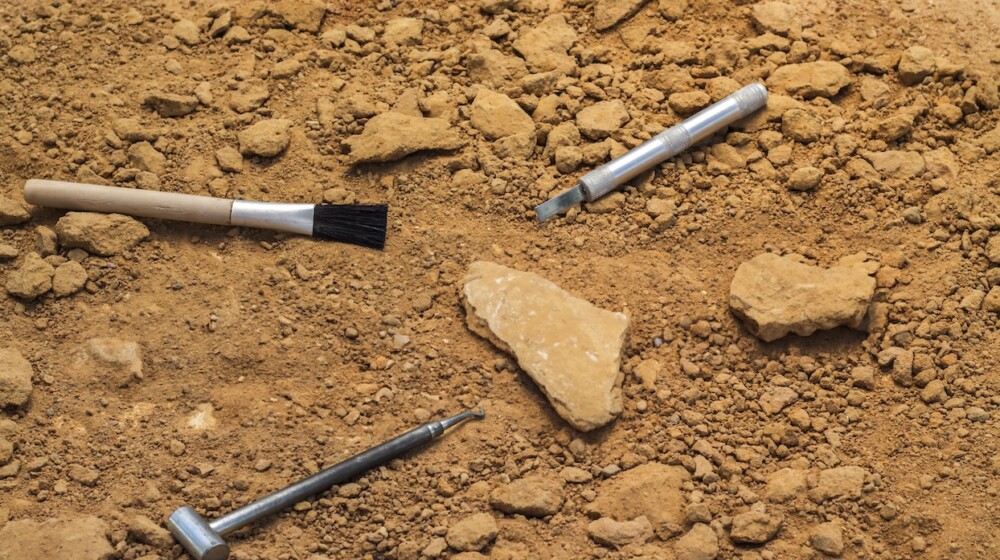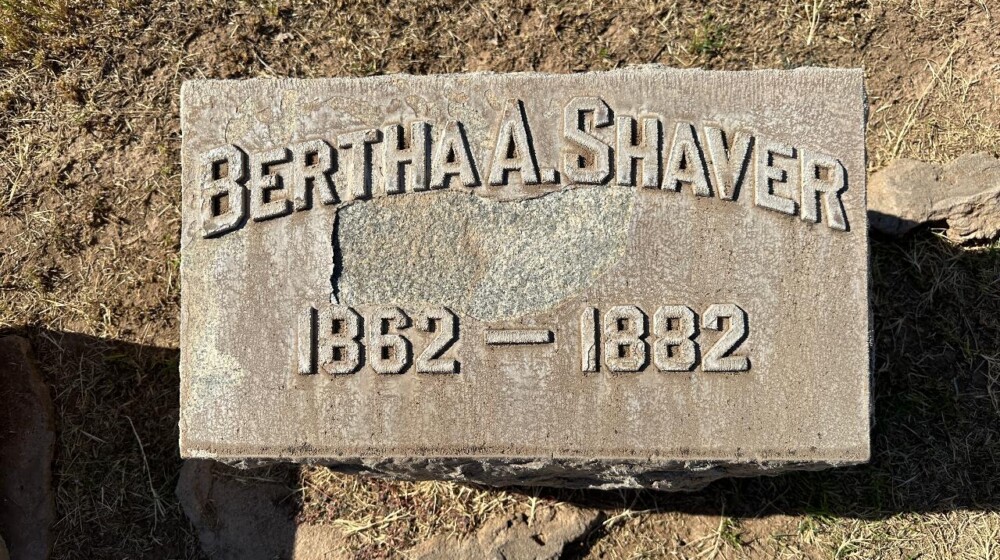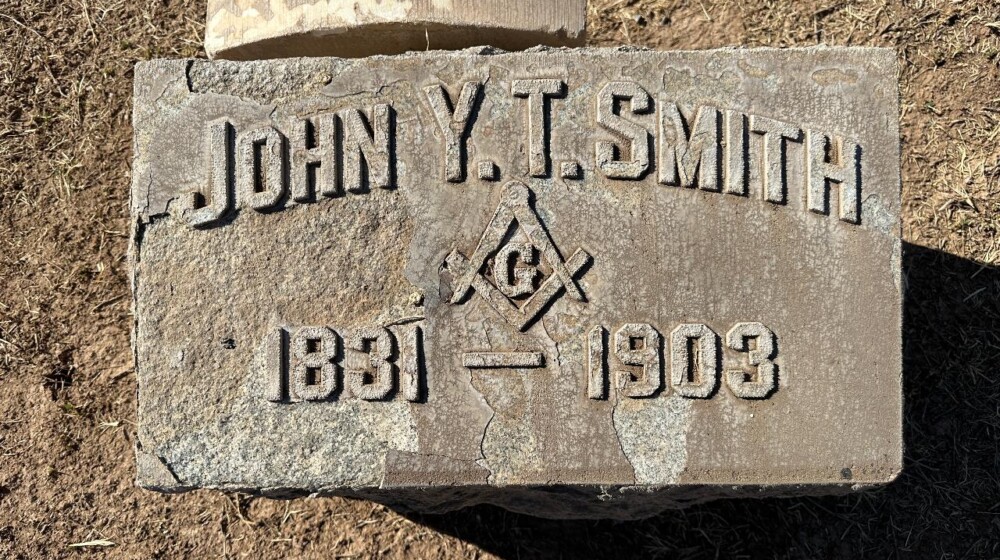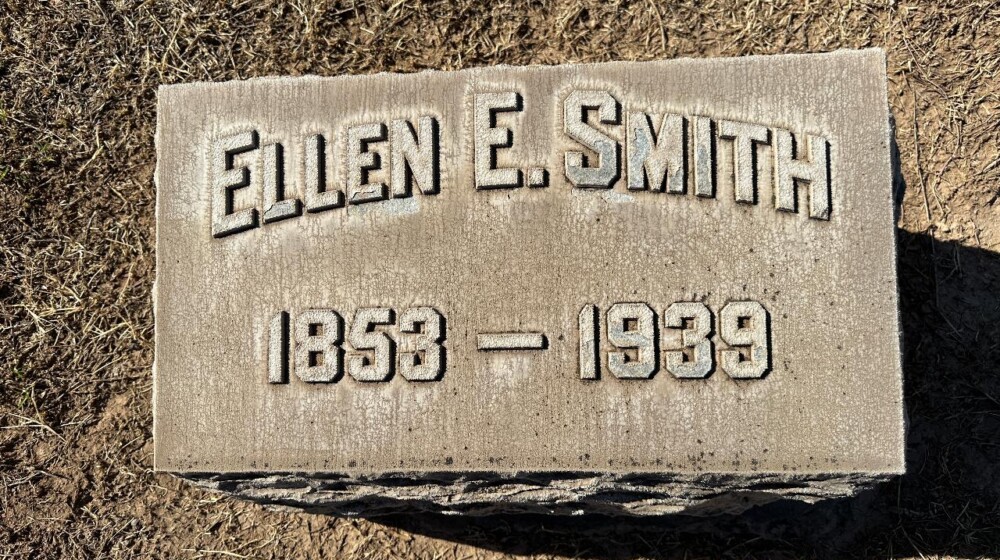Archaeological Finds: Memorial Markers From a Privy at Heritage Square
Posted May 1, 2024
Written by guest author and historian, Ed Dobbins
For a printable version of this article, please click here.
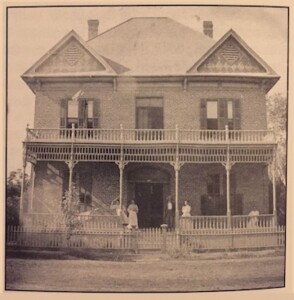
John Y. T. and Ellen Smith’s house on Adams Street. From The Historic Archaeology of Heritage Square, by Mark E. Hackbarth.
Did you know…
Two metal panels believed to be grave markers were excavated at Heritage Square in Phoenix during the mid-1990s. They were found in a privy close to the home of John Y. T. Smith and each of the people named on the markers was related to him. Bertha A. Shaver, (1862-1882), was Smith’s sister-in-law and William Y. T. Smith, (1879-1883), his young son.
The one-third inch thick panels measure about 10 by 8 inches and are made of zinc. They do not carry legible manufacturer’s marks, but similar items can be found in the 1882 catalogue for the Monumental Bronze Company of Connecticut, seen below. Zinc grave markers were popular from the 1880s to the 1920s as a less expensive alternative to carved stone. Panels like the ones found in the privy were replaceable and attached to the monument base using bolts. They carried personal information, decorative designs, or could be left blank. The memorial illustrated in the catalogue was one of several styles of monuments to which the Smith and Shaver markers could have been attached.

A page from the 1882 catalogue for the Monumental Bronze Company of Connecticut, and enlargement of the inset panel.
The privy where the markers were found was in service from approximately 1892 to 1907 when it was capped. This time frame indicates the panels were not in use when the bodies were moved to Greenwood in 1914. They would have stood at either or both of the first two early Phoenix European cemeteries before 1907.
The first predominately European cemetery in Phoenix was at the southwest corner of the original Phoenix townsite between 5th and 7th Avenues south of Madison Street. Little is known about the number and types of markers at the townsite cemetery and none have been documented to date. C. J. Dyer’s 1885 drawing of Phoenix shows a few graves surrounded by fencing and one comment in a contemporary newspaper suggested that graves were often designated “by some flimsy stick or board that a gust of wind would remove.” Despite the lack of precedent, the first cemetery was open until late 1884 and it is reasonable to believe the Heritage Square zinc markers could have been placed there.

Bertha Shaver’s original grave marker.
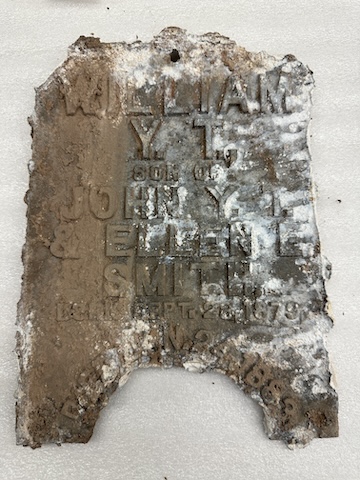
William Smith’s original grave marker.
The original cemetery was replaced in 1884 by the cemeteries that comprise Pioneer & Military Memorial Park (PMMP) between 13th and 15th Avenues south of Jefferson Street. One zinc monument is located there now, and the presence of others in the past would not be unexpected. William’s father John Y. T. Smith owned a family plot in the Masons’ section of PMMP. The panels for William Smith and Bertha Shaver may have been attached to one or two monuments purchased for the new cemetery or moved from the old to the family plot at Mason’s.
John Y. T. Smith’s death in 1903 may have been the event that triggered the disposal of the zinc panels. The date falls during the period when the privy was in use and replacement markers for William and Bertha could have been ordered at the same time as the marker for John. His gravestone and those of his son and sister-in-law are carved from the same size, shape, and variety of granite, and all three exhibit similar spalling (i.e. – wear and tear) on the top surface from weathering. Each of the gravestones could have been placed at Masons in 1903 then moved to Greenwood in 1914 with the bodies. John’s wife Ellen’s monument was carved in the same style at her death in 1939 and has a less weathered appearance.
Learn more about the archaeological digs around Heritage Square from our previous blog, We Dig It!, from January 2018.
Archive
-
2024
-
July (1)
-
June (1)
-
May (1)
-
April (1)
-
March (1)
-
February (1)
-
January (1)
-
-
2023
-
December (1)
-
November (1)
-
October (1)
-
September (1)
-
August (1)
-
July (1)
-
June (1)
-
May (1)
-
April (1)
-
March (1)
-
February (1)
-
January (1)
-
-
2022
-
December (1)
-
November (1)
-
October (1)
-
September (1)
-
August (1)
-
July (1)
-
June (1)
-
May (1)
-
April (1)
-
-
2021
-
December (1)
-
November (1)
-
October (1)
-
September (1)
-
August (1)
-
July (1)
-
June (1)
-
May (1)
-
April (1)
-
March (1)
-
February (1)
-
January (1)
-
-
2020
-
December (1)
-
November (1)
-
October (1)
-
September (1)
-
August (1)
-
July (1)
-
June (1)
-
May (1)
-
April (1)
-
March (1)
-
February (1)
-
January (1)
-
-
2019
-
December (1)
-
November (1)
-
October (1)
-
September (1)
-
August (1)
-
July (1)
-
June (1)
-
May (1)
-
April (1)
-
March (1)
-
February (1)
-
January (1)
-
-
2018
-
December (1)
-
November (1)
-
October (1)
-
September (1)
-
August (1)
-
July (1)
-
May (1)
-
April (1)
-
March (1)
-
February (1)
-
January (1)
-
-
2017
-
December (1)
-
November (1)
-
October (1)
-
September (1)
-
August (1)
-
July (1)
-
June (1)
-
May (1)
-
April (1)
-
March (1)
-
February (1)
-
January (1)
-
-
2016
-
December (1)
-
-
2015
-
2014
-
July (1)
-
